Smart Governance Definition
IGI Global defines Smart Governance or smart e-governance as the “use of technology and innovation to facilitate and support enhanced decision-making and planning within governing bodies”. It is often associated with improving the democratic processes and transforming the ways that public services are delivered. In the case of Hello Lamp Post we focus on how public services are delivered and better inform how governing bodies make their decisions based on the data derived from our playful and innovative solutions. The importance of Smart Governance has been recognised as a fundamental necessity of smart cities as it creates a strong link between a government and its citizens.
Still a little unclear? Watch this quick video to learn more.
Barriers / Requirements of Smart Governance
After having consulted experts in local municipality decision-making bodies, we’ve concluded that several elements can promote, inhibit, or pose as barriers to smart governance solutions.
As it is with everything, cost is an important determining factor in implementing a smart governance solution. This is followed closely by infrastructure and Technology. Smart Government solutions offer long-term cost savings through both internal or external streamlining of services.
- Level of enjoyment: Some issues won’t interest the general public, so getting engagement can prove difficult. Firstly, only consulting the public on matters relevant to them is important, as engagement is highly unlikely if the matter is out of the realm of the average individual in a community. Secondly, by leveraging playful and innovative engagement mediums, the likelihood of adoption increases. This can involve adding a layer of gamification to the public participation process.
- Illiteracy: Having relevant skills to use the e-governance application is important for the solution to succeed as a whole. For this reason, digital literacy presents governing bodies with a considerable barrier, ease of use. In some cases, what’s known as the ‘digital divide becomes apparent. While this can be due to digital illiteracy, it can also come in an economic form. By economic form, we mean individuals may not have enough money to possess the necessary Technology to engage and would be excluded from the consultation process leading to inequality.
- Ability to show tangible results: We’ve seen a trend in local authority decision-making bodies stating that innovative solutions are more likely to be onboarded if supporting claims of performance can be verified. This can range from showing use cases of the product or service being in action and highlighting the overall benefit it brought to previous clients or from trial/pilot projects. In Summerside, Canada Hello Lamp Post was able to work alongside the city governing body to influence the tax budget which allowed citizens to see firsthand the impact their decisions had on the community.
Trending smart governance solutions
ICT – Information Communication Technology is the foundation on which Smart Governance is based. This form of Technology enhances the level of collaboration between government departments and provides a means to deliver services efficiently and sustainably. ICT has given rise to an information-based atmosphere that can be exploited by Smart Governance to communicate and collaborate with both businesses and citizens.
Social media interactions and analysis – So long as cities are using social media to talk less and listen more, it can be used as a tool on which Smart Governance can flourish, says Stephen Goldsmith. We’ve seen a trend in government organisations developing their social media presence and strategy online. Still, more significant strides need to be made to help facilitate Smart Governance.
- The structure of the Internet governance ecosystem should ensure the meaningful and accountable participation of all stakeholders, including governments, the private sector, civil society, the technical community, the academic community, and users.
- Global IoT governance ecosystem models should be open, participative, transparent, and consensus-driven.
- Internet governance should be carried out through a distributed, decentralised, and multi-stakeholder ecosystem.
Private and Public Cloud – Cloud Computing creates an opportunity for government agencies to modernise their entire IT ecosystems, decrease costs and increase overall efficiencies. Whether it’s SaaS (software as a service) – based collaboration services or the use of cloud computing infrastructure as a service (IaaS), government agencies are increasingly turning to the cloud as part of their IT modernisation efforts. This concept is what’s known as becoming ‘Cloud Smart.’ Growing adoption typically means more users in the cloud, more workloads running in the cloud, and more than one cloud provider. Using more than one provider on both private and public clouds is known as a hybrid approach link.
FAQ Section
- What are some examples of smart Governance?
Smart Governance comes in many forms. Smart Landscapes, electronic procurement systems, and innovative accounting and management systems are but a few examples. Check out our 100 FAQs piece for more!
- What are the components of Smart Governance?
Allerrin provided three primary components of smart Governance.
- Funds: As we’ve alluded to already, cost efficiencies are a core focus for governing bodies considering onboarding a solution like this, and the projects themselves rarely receive the necessary resources to be fully optimised.
- Infrastructure: This component looks at the measures currently in place to facilitate the onboarding of an e-governance solution. One primary obstacle with IT Infrastructure is storage capacity. “Hardware storage has memory limitations, while the data stored on the cloud can be hacked. Hence, a blockchain-based decentralised cloud can prove useful to overcome storage limitations and avoid data breaches”. Open data is any data that is freely available on the internet.
- Technology: This is an amalgamation of all the previously mentioned aspects of Information Technology such as IoT AI blockchain, social media, ICT, and Cloud Applications.
- What are the components of smart Governance?
According to research, Smart Governance is Governance based on; smart ICT, smart external collaboration and participation, smart internal coordination, smart decision-making processes, smart e-administration, and smart outcomes. Some of the main outcomes Smart Governance attempts to achieve are economic growth, citizen-centric services, social inclusion, ecological performance, interaction with citizens, and a more efficient government
- Is Smart Governance a characteristic of a smart city?
Yes, Smart Governance is one of the core characteristics of smart cities; Smart Governance involves using technology better to align government processes with the needs of the people. Smart Governance in a smart city is commonly regarded as a core element to a smart city’s overall level of operation.
- What is the difference between Civic Tech and GovTech?
According to citizen labs, The main difference between these commonly associated terms is that civic tech focuses on citizens and govtech, more so on technology that improves the internal capabilities of a government institution. There are a lot more elements to this, but in short, this would be the best way to differentiate.
- Is smart Governance a characteristic of a smart city?
Yes, Smart cities have several characteristics like improving transportation and accessibility, improving social services, promoting sustainability, and giving citizens a voice. For more information, check out the national institute for Smart Governance.
- Brazil (Curitiba) – Connected Smart Cities ranked Curitiba as the smartest city in Brazil, out judging them based on 11 indicators against 700 other cities. The Curitiba bus system is the living embodiment of Bus Rapid Transit (BRT), alluding to a public transportation network that runs efficiently and cost-effectively, and sustainably. Re-imagine estimated that more than 27 million auto-trips were saved over the years as a result of the effective Governance of Curitiba BRT. This project involved the use of both Curitiba urban planning and Curitiba green city and allowed for the creation of a seamless communication platform on which different governmental sectors could collaborate.
“I met a local government that had 87 different communication systems! They work in silos, they do not speak, it is slow, and the consequence of this is terrible attention to the citizens.” – Rafael Burity.
This shows that even if the criteria as mentioned earlier are in place (money, infrastructure etc) a Smart Governance solution isn’t reaching its full capacity without a human-centric civic tech system.
If you want to learn more about how Hello Lamp Post can help you to improve your Smart Governance program, contact us by email at contact@hlp.city or on our site’s contact form.














